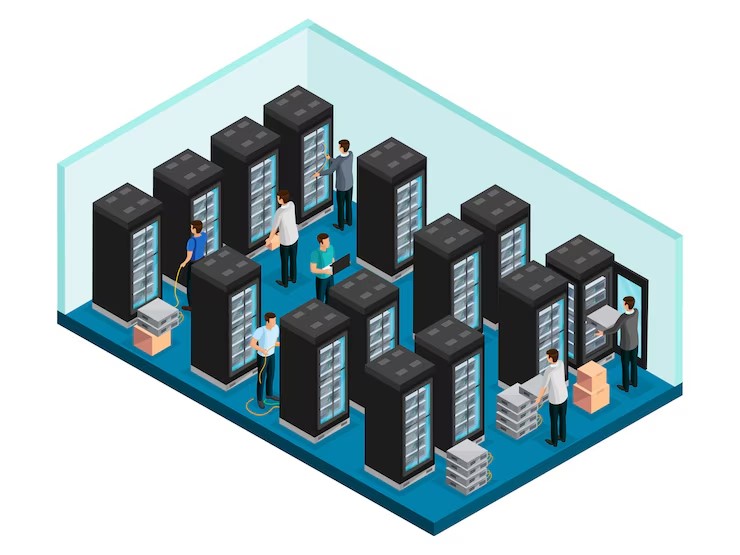How to Develop a Data Warehouse: Tools, Steps & Best Practices
- October 8, 2025
- Posted by: admin
- Category: Data Warehouse

Nowadays, businesses need structured, accessible, and consolidated information to make informed decisions for data management. That’s where data warehouses come into play. A well-planned Data Warehouse Development project allows companies to integrate data from multiple sources, run complex queries, and generate analytics that fuel strategic initiatives. But building a data warehouse isn’t just about technology—it’s about smart planning, disciplined execution, and using the right tools and methods.
In this blog, we will discuss the essential steps of building a data warehouse, the tools involved, and industry best practices, incorporating data warehouse methodologies like the top-down approach in data warehouse design.
What is Data Warehouse Development?
Data Warehouse Development refers to the process of designing, implementing, and managing a centralized repository of integrated data from multiple sources. Unlike traditional databases, which are optimized for transaction processing, data warehouses are built to handle analytical queries and data mining.
Whether you are designing a new system from scratch or enhancing an existing one, a successful Data Warehouse Implementation involves careful consideration of business goals, data models, scalability, and data governance.
Why Data Warehouse Development Matters?

Developing a robust data warehouse helps organizations:
- Centralize and standardize data from multiple sources
- Improve reporting accuracy and speed
- Enable historical data analysis. It can store years of data ranging from 5-25 years and more.
- Facilitate better business decisions
- Enhance compliance and data governance
A well-structured data warehouse development process can serve as a strategic asset, boosting operational efficiency and long-term growth potential.
Steps for Building a Data Warehouse
The data warehouse design process involves careful planning, execution, and maintenance. Here are the core steps to refine data from various sources:
1. Define business objectives
Begin with understanding the key business questions your organization wants to answer. Define the objectives and KPIs (Key Performance Indicators) that your data warehouse services will support. Aligning technical goals with business needs ensures that the system delivers actual value.
2. Choose the right data warehouse architecture
The right data architecture is very important for business growth and efficiency. There are three common approaches to designing a data warehouse:
- Top-down approach: This involves designing the entire system at once and then creating data marts as subsets. This method offers consistency and scalability.
- Bottom-up approach: Introduced by Ralph Kimball, this starts with data marts and builds up to a full warehouse. He suggested a “bottom-up” approach that begins by identifying key processes and designing the warehouse based on the questions data analysts and decision-makers need to answer.
- Hybrid approach: Combines elements of both.
The top-down approach in data warehouse development is ideal for organizations that prioritize consistency across all data sources and departments.
3. Data modeling and schema design
In this phase, decide on the schema type:
- Star schema: Simplified and fast for queries.
- Snowflake schema: More normalized, reduces redundancy.
- Galaxy schema: Combines multiple fact tables.
The choice depends on your analytical needs and the complexity of your data relationships.
4. Select tools and technologies
Choosing the right technology stack is critical. Here are some categories and options:
- ETL Tools: Talend, Apache NiFi, Informatica
- Database Management Systems: Amazon Redshift, Snowflake, Google BigQuery, Microsoft Azure Synapse
- Data Integration Platforms: Fivetran, Stitch, Apache Kafka
Moreover, using modern, cloud-based solutions allows for easier scaling and real-time data processing, which is essential for fast-moving businesses.
5. Extract, Transform, Load (ETL)
In this crucial step, raw data is extracted from source systems, transformed to match the schema, and loaded into the warehouse. ETL processes must handle data cleansing, deduplication, and type conversions.
Ensure your data warehousing and ETL processes are efficient and can scale with growing data volumes.
6. Data warehouse implementation
Now comes the actual data warehouse implementation. This thing involves the following details:
- Setting up the environment (on-premises or cloud)
- Integrating data sources
- Scheduling regular ETL jobs
- Testing data accuracy and performance
It’s important to have a rollback plan and perform rigorous testing before going live.
7. Set up metadata and data governance
Metadata provides context for your data (e.g., source, definition, update frequency). Implement data governance practices to maintain data quality, security, and compliance.
8. Enable access and reporting
Build dashboards and reporting tools for end users. Common visualization tools include Tableau, Power BI, and Looker. Make sure user access is governed by role-based permissions.
Top Practices to Follow for Data Warehouse Development

To maximize the benefits of your data warehouse development, follow these best practices:
1. Start small, scale gradually
Begin with a specific use case or department. Build success stories internally before scaling to enterprise-wide implementation.
2. Prioritize data quality
A data warehouse is only as good as the data it holds. Invest in data profiling and quality checks at each stage of the ETL pipeline.
3. Automate wherever possible
Automate data extraction, loading, and alerting processes to reduce errors and free up developer time for strategic tasks.
4. Opt for cloud when feasible
Cloud-based data warehouses offer elasticity, ease of deployment, and cost savings on infrastructure. Fresh Consulting highlights how modern businesses increasingly turn to cloud-native architectures for better scalability and agility.
5. Involve Stakeholders Early
Include business users, data engineers, and IT teams in the design process. Their input ensures the warehouse serves its intended purpose and reduces rework.
6. Monitor and Optimize
Once live, continuously monitor usage patterns, query performance, and storage costs. Use these insights to refine indexes, update data models, and adjust resource allocation.
How Much Does It Cost to Build a Data Warehouse?
Are you building a simple system or a full-scale enterprise solution? The scope, complexity, and features of your data warehouse system play a major role in determining the price.
Data warehouse development costs can range widely, from tens of thousands to hundreds of thousands of dollars, based on factors like your organization’s size and data volume.
For large enterprises, building and maintaining a data warehouse can even run into the millions due to the high level of complexity involved.
Common Uses for Data Warehousing
Data warehouses offer valuable solutions for businesses across industries, helping them address a variety of challenges. Below are some of the most common scenarios where data warehousing proves beneficial.
1. Data-Mining & Analytics
One of the key advantages of a data warehouse is its capacity to handle advanced data mining and analytics. These systems allow organizations to uncover patterns and insights from massive datasets—something that would be impossible to achieve manually.
Data mining involves identifying meaningful relationships and trends within large volumes of data, a task far better suited to technology than to human analysts. However, to derive accurate and useful insights, the system needs access to a comprehensive and well-organized dataset, exactly what a data warehouse provides.
By centralizing data from across the organization, a data warehouse enables deep analysis, uncovering trends and connections that drive smarter business decisions.
2. Optimizing Sales Campaigns
A data warehouse eliminates guesswork from sales and marketing efforts by providing a unified, accurate view of customer and lead information.
Customer Relationship Management (CRM) tools have shown us that managing leads doesn’t have to be complex or disorganized. A data warehouse enhances this by ensuring that leads don’t get lost in the shuffle and that marketing messages are informed by rich, data-driven insights, not just basic contact lists.
With centralized data access, sales and marketing teams can align their strategies, launch campaigns more efficiently, and respond to market demands in real time.
3. Ensuring Data Quality
Beyond analysis, data warehouses play a crucial role in monitoring and maintaining data quality.
Much like a recipe depends on the quality of its ingredients, analytics depend on the integrity of the data they process. Poor-quality data can lead to flawed insights and misinformed decisions.
While manual quality checks are costly and time-consuming, a data warehouse enables automated assessment of incoming data, highlighting gaps, inconsistencies, and normalization issues without extra overhead. This allows organizations to trust the data they’re using to make critical decisions.
4. Migrating Legacy Systems
Modernizing legacy systems can be a complex, resource-intensive endeavor. Outdated formats and incompatible technologies make it difficult to integrate old data with new platforms.
A data warehouse simplifies this process by transforming data from legacy systems into standardized formats that modern tools can easily interpret. What would otherwise be a time-consuming manual task is efficiently handled through automation, saving time, reducing errors, and ensuring continuity during system upgrades or migrations.
Final Thoughts
Building a data warehouse is a strategic investment in your organization’s future. When done right, it can unlock valuable insights, streamline operations, and empower decision-makers. But success depends on having a clear roadmap, the right tools, and ongoing stakeholder collaboration.
Whether you’re following a top-down approach in data warehouse design or scaling from department-level data marts, always prioritize scalability, data quality, and user accessibility. By following the steps and best practices outlined in this guide, your data warehouse development journey can become a game-changer for your business intelligence strategy.
Streamline your data management with Techmicra – Advanced Data Warehouse services. We help businesses centralize, organize, and analyze massive datasets for smarter decision-making. Experience faster insights, enhanced scalability, and secure storage—all customized to your unique business needs. Empower your enterprise with our reliable, future-ready data warehouse solutions.
Frequently Asked Questions
1. What are the key steps in Data Warehouse Development?
The data warehouse development process typically includes requirement analysis, data modeling, ETL (Extract, Transform, Load) design, data warehouse implementation, and testing. A well-planned data warehouse design process ensures smooth data flow, integration, and accessibility for business intelligence purposes.
2. What is the top-down approach in data warehouse development?
The top-down approach in data warehouse development begins with creating a centralized, enterprise-wide data warehouse before building data marts for specific business units. This method ensures a unified data model, better consistency, and easier data governance.
3. What are the best practices for data warehouse implementation?
Best practices for data warehouse implementation include starting with a clear data strategy, selecting scalable tools, involving stakeholders early, ensuring data quality, and adopting an incremental delivery approach. Regular testing and monitoring are also crucial to long-term success.

